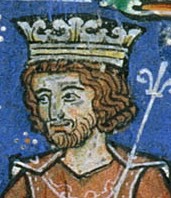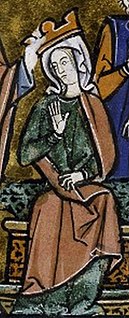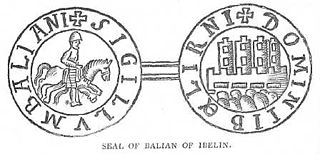Composition of the court
The Haute Cour was a combination of legislative and judicial powers. It had its basis in medieval parliamentarian ideals: a sovereign desired the consent of his subjects in certain matters, such as taxation and obligations to conduct military service.
The court developed gradually during the early 12th century CE, along with the kingdom itself, in the aftermath of the First Crusade. Technically all vassals of the king which were subject to its decisions had the right to sit and vote, but in practice only the more wealthy nobles did so; certain nobles attended regularly and tended to serve as presiding judges when necessary. This developed into a system of higher nobles (direct vassals of the king) and lesser nobles (indirect vassals, who owed service to the higher nobles), with different privileges depending on idiosyncratic circumstances. Anyone who had committed perjury or had broken an oath (whether a higher or lesser noble) forfeited his right to speak and vote. Only four votes (the king and any three vassals) were required to form a quorum.
The court could meet wherever necessary, not solely in Jerusalem. After around 1120 the court also included bishops, and according to tradition new crusaders were entitled to sit and vote; the first time this occurred was the Council of Acre on 24 June 1148 during the Second Crusade, when the fatal decision to attack Damascus was made. Later the masters of the military orders were entitled to sit and vote as well. During the 12th century there was also a smaller group of advisors to the king, but by the end of the century this group had fallen out of use.
Duties of the court
The court levied taxes on the inhabitants of the kingdom, and voted on military expeditions. A formal vote for war would mobilize all the vassals of the kingdom. The court was the only judicial body for the nobles of the kingdom, hearing cases of murder, rape, assault, wardship, debt, recovery of slaves, sales and purchases of fiefs and horses, default of service, inheritance, and treason. Punishments included forfeiture of land and exile, or in extreme cases, death. It was possible to escape punishment from the court by challenging all the appointed judges to a trial by combat and defeating them (but this was of course impractical and was never done). The court was also responsible for minting coins.
Most importantly, the court elected the king or his regent, or settled disputes between various claimants. Each new reign began with a meeting of the court, to formally recognize the new king and to swear an oath of homage to him. They also gave advice to the king and developed proper procedures for doing so, but in practise they could disagree with the king and override his wishes. Essentially, the king was only "first among equals" while sitting in the court, although he was recognized as its head (in the king's absence the court was presided over by his seneschal).
Significance
Most of our information on the court comes from John of Ibelin's description of it, written in the 1260s. His description was an idealized explanation of the laws and procedures, based on the idea that Godfrey of Bouillon, the first king of Jerusalem, had personally established it and that it had remained unchanged since then (in the 13th century Godfrey was already a legendary figure). This was not the case, although it did develop much more slowly than similar contemporary courts elsewhere in Europe. Unlike France or England, the kingdom was not developing into a centralized parliamentary government – in fact it developed the opposite way, with the king losing more and more power to the barons. The court had essentially fossilized the feudalism of northern France circa 1100; because the kingdom was constantly at war, covered so little land, had so few westerners, and survived in Jerusalem for less than a hundred years, it did not have a chance to develop into a true Parliament.
John of Ibelin's description, while useful, was taken too literally by later historians. In the 19th century, the court was commonly held to be the purest representation of feudalism in all of the Middle Ages, although today this is considered too simplistic. The court was in some ways a fairly typical feudal court, but was adapted to the specific circumstances of the crusades and of the Kingdom of Jerusalem.

Amalric or Amaury I was King of Jerusalem from 1163, and Count of Jaffa and Ascalon before his accession. He was the second son of Melisende and Fulk of Jerusalem, and succeeded his older brother Baldwin III. During his reign, Jerusalem became more closely allied with the Byzantine Empire, and the two states launched an unsuccessful invasion of Egypt. He was the father of three future rulers of Jerusalem, Sibylla, Baldwin IV, and Isabella I.

The Kingdom of Jerusalem also known as the Latin Kingdom of Jerusalem or the Frankish Kingdom of Palestine, was a Crusader state established in the Southern Levant by Godfrey of Bouillon in 1099 after the First Crusade. The kingdom lasted nearly two hundred years, from 1099 until 1291 when its last remaining possession, Acre, was destroyed by the Mamluks. Its history is divided into two distinct periods.

Melisende was Queen of Jerusalem from 1131 to 1153, and regent for her son between 1153 and 1161 while he was on campaign. She was the eldest daughter of King Baldwin II of Jerusalem, and the Armenian princess Morphia of Melitene.

Baldwin III was King of Jerusalem from 1143 to 1163. He was the eldest son of Melisende and Fulk of Jerusalem. He became king while still a child, and was at first overshadowed by his mother Melisende, whom he eventually defeated in a civil war. During his reign Jerusalem became more closely allied with the Byzantine Empire, and the Second Crusade tried and failed to conquer Damascus. Baldwin captured the important Egyptian fortress of Ascalon, but also had to deal with the increasing power of Nur ad-Din in Syria. He died childless and was succeeded by his brother Amalric.

Guyof Lusignan was a French Poitevin knight, son of Hugh VIII of Lusignan and as such born of the House of Lusignan. He was king of Jerusalem from 1186 to 1192 by right of marriage to Sibylla of Jerusalem, and King of Cyprus from 1192 to 1194. Having arrived in the Holy Land at an unknown date, Guy was hastily married to Sibylla in 1180 to prevent a political incident within the kingdom. As the health of his brother-in-law, Baldwin IV of Jerusalem, deteriorated, Guy was appointed by Sibylla as regent for his stepson, Baldwin V of Jerusalem. Baldwin IV died in 1185, followed shortly by Baldwin V in 1186, leading to the succession of Sibylla and Guy to the throne. Guy's reign was marked by increased hostilities with the Ayyubids ruled by Saladin, culminating in the Battle of Hattin in July 1187—during which Guy was captured—and the fall of Jerusalem itself three months later.

The Crusader States, also known as Outremer, were four Roman Catholic realms in the Middle East that lasted from 1098 to 1291. These feudal polities were created by the Latin Catholic leaders of the First Crusade through conquest and political intrigue. The four states were the County of Edessa (1098–1150), the Principality of Antioch (1098–1287), the County of Tripoli (1102–1289), and the Kingdom of Jerusalem (1099–1291). The kingdom of Jerusalem covered what is now Israel and Palestine, the West Bank, the Gaza Strip, and adjacent areas. The other northern states covered what are now Syria, south-eastern Turkey, and Lebanon. The description "Crusader states" can be misleading, as from 1130 very few of the Frankish population were crusaders. The term Outremer, used by medieval and modern writers as a synonym, is derived from the French for overseas.

The Crusader state of the Kingdom of Jerusalem, created in 1099, was divided into a number of smaller seigneuries. According to the 13th-century jurist John of Ibelin, the four highest crown vassals in the kingdom proper were the count of Jaffa and Ascalon, the prince of Galilee, the lord of Sidon, and the lord of Oultrejordain.

There were six major officers of the kingdom of Jerusalem: the constable, the marshal, the seneschal, the chamberlain, the butler and the chancellor. At certain times there were also bailiffs, viscounts and castellans.

Agnes of Courtenay was a Frankish noblewoman from the Crusader states. Agnes's parents, Joscelin II of Edessa and Beatrice of Saone, lost the County of Edessa in 1150. As the widow of Reynald of Marash, Agnes married Count Amalric of Jaffa and Ascalon, younger son of Queen Melisende. When he unexpectedly inherited the crown in 1163, the High Court of Jerusalem refused to accept Agnes as queen and insisted that Amalric repudiate her in return for their recognition of his succession. Agnes retained the title of countess and married twice more. She gained influence after Amalric died and their son, Baldwin IV, became king.

The King of Jerusalem was the supreme ruler of the Kingdom of Jerusalem, the Crusader state founded by Christian princes in 1099 when the First Crusade took control of the city.

Balian of Ibelin, also known as Barisan the Younger, was a crusader noble of the Kingdom of Jerusalem in the 12th century. He was lord of Ibelin from 1170–1193. As the leader of the defense of the city during the siege of Jerusalem in 1187, he surrendered Jerusalem to Saladin on October 2, 1187.
Hugh II, also called Hugh du Puiset, was a Crusader and the Count of Jaffa. He revolted against King Fulk of Jerusalem in 1134.
John of Ibelin, called the Old Lord of Beirut, was a powerful crusader noble in the 13th century, one of the best known representatives of the influential Ibelin family. The son of Balian of Ibelin and the dowager queen Maria Comnena, he had close ties with the nobility of both Cyprus and Jerusalem, since he was the half-brother of Queen Isabella I of Jerusalem. Before he was 20, he was appointed constable of Jerusalem, and a few years later became lord of Beirut, where he rebuilt the city after Saladin's conquest, and established the grand Ibelin family palace. He served as regent for Isabella's daughter Maria of Montferrat from 1205 to 1210 and then for Isabella's grandson Henry I of Cyprus from 1228 until Henry came of age in 1232. John was known as a principled man, and was seen as the natural leader of the Christian barons in the Holy Land. He resisted the power-seeking of Frederick II, Holy Roman Emperor, in Cyprus, and opposed the imperial forces until Henry came of age.
John of Ibelin, count of Jaffa and Ascalon, was a noted jurist and the author of the longest legal treatise from the Kingdom of Jerusalem. He was the son of Philip of Ibelin, bailli of the Kingdom of Cyprus, and Alice of Montbéliard, and was the nephew of John of Ibelin, the "Old Lord of Beirut". To distinguish him from his uncle and other members of the Ibelin family named John, he is sometimes called John of Jaffa.

The Assizes of Jerusalem are a collection of numerous medieval legal treatises written in Old French containing the law of the crusader Kingdom of Jerusalem and Kingdom of Cyprus. They were compiled in the thirteenth century, and are the largest collection of surviving medieval laws.

The double County of Jaffa and Ascalon was one of the four major seigneuries comprising the major Crusader state of the Kingdom of Jerusalem, according to 13th-century commentator John of Ibelin.

The Assise sur la ligece is an important piece of legislation passed by the Haute Cour of Jerusalem, the feudal court of the crusader Kingdom of Jerusalem, in an unknown year but probably in the 1170s under Amalric I of Jerusalem.
Manasses of Hierges was an important crusader and constable of the Kingdom of Jerusalem. He was lord of Ramla from 1150–1152.

Maria Komnene, Latinized Comnena, was the queen of Jerusalem from 1167 until 1174 as the second wife of King Amalric. She occupied a central position in the Kingdom of Jerusalem for twenty years, earning a reputation for intrigue and ruthlessness.

The Council of Acre met at Palmarea, near Acre, a major city of the crusader Kingdom of Jerusalem, on 24 June 1148. The Haute Cour of Jerusalem met with recently arrived crusaders from Europe, to decide on the best target for the crusade. The Second Crusade had been called after the fall of Edessa to Zengi in 1144. In 1147, armies led by Conrad III of Germany and Louis VII of France began their separate journeys to the east. Conrad arrived at Acre in April 1148, and Louis marched south from Antioch.













